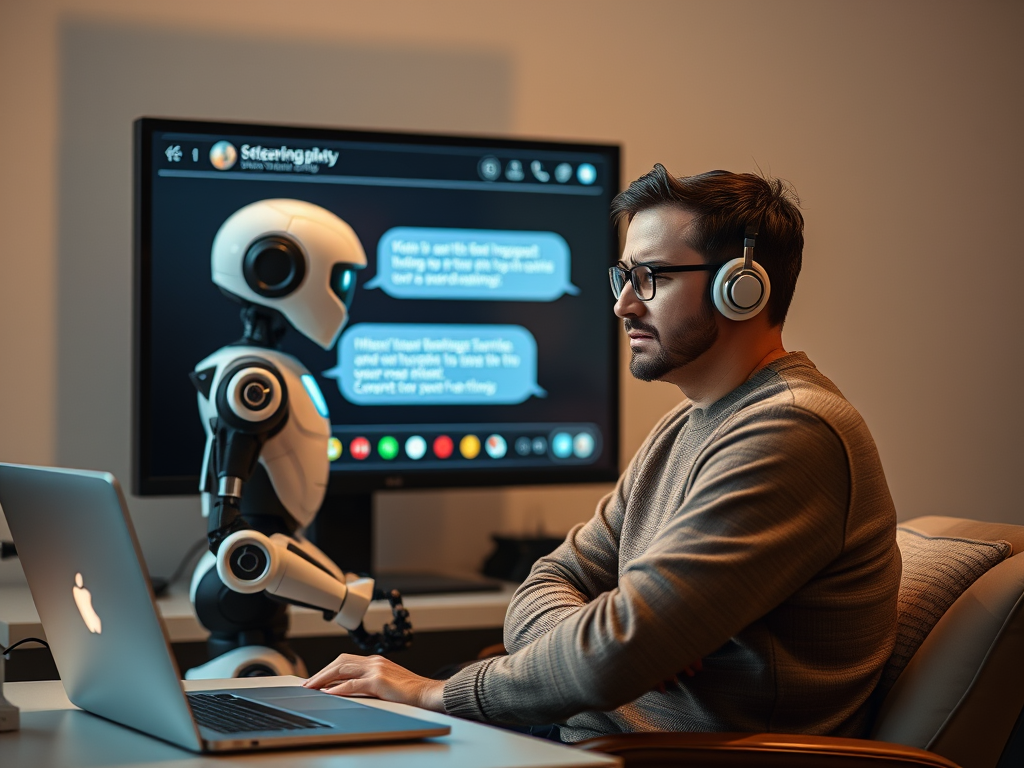The human-tech solution
In an increasingly tech-driven world, companies are often tempted to rely heavily on technology to deliver services and enhance customer experiences. However, this approach can backfire if not balanced with a deep understanding of the core principles of service marketing. Below are the ten key components of service marketing and how companies might miss the mark by placing too much faith in technology that in many cases can cause customer alienation and disconnect from the brand and brand value.
1. Intangibility
Services, unlike products, cannot be touched or seen before purchase. This makes it critical for companies to build trust through transparency, reviews, and personalized communication. Overreliance on chatbots and automated messages can alienate customers when they crave human reassurance.
2. Inseparability
The production and consumption of services occur simultaneously. For example, a haircut or a dining experience cannot be separated from its delivery. Companies focusing solely on tech—such as self-checkout kiosks or virtual consultations—risk losing the warmth and connection that human interaction provides.
3. Variability
Services are dynamic and can differ depending on who provides them and under what circumstances. AI-driven solutions like recommendation engines often lack the nuanced adaptability of human professionals, leading to generic experiences instead of tailored ones.
4. Perishability
Services cannot be stored or saved; they are consumed at the moment. For instance, an empty hotel room represents lost revenue for that night. While technology can help with predictive analytics and dynamic pricing, poor customer service during peak times, such as automated responses during travel disruptions, can damage brand loyalty.
5. Customer Engagement
Great service marketing relies on building meaningful relationships. Many companies fall into the trap of using data analytics to replace authentic connections rather than augment them. Customers value being treated as individuals, not as entries in a CRM system.
6. Service Quality
Delivering consistent, high-quality service is crucial. Technology can assist in standardizing processes, but excessive automation risks dehumanizing interactions. Consider how frustrating it is to navigate a complex phone tree instead of speaking to a live agent.
7. The Service Mix (7Ps)
The extended marketing mix for services includes People, Process, and Physical Evidence in addition to the traditional Product, Price, Place, and Promotion. Many companies overlook the importance of the human element (“People”) when they let technology dominate the customer interface.
8. Empathy and Responsiveness
Empathy is vital for resolving customer issues effectively. AI-powered systems often lack the emotional intelligence required to truly understand and address complex or sensitive concerns. A heartfelt apology from a human agent can outweigh a perfectly worded auto-response.
9. Brand Perception
The way a service is marketed impacts its perception. Overuse of tech-driven tools can make a company seem impersonal, harming its brand image. Customers often remember how they felt during interactions, not just the efficiency of the service.
10. Feedback Loops
Service marketing thrives on feedback for continuous improvement. While technology makes it easy to collect and analyze feedback, the lack of action on customer suggestions—often due to over-automated systems—leaves patrons feeling ignored.
Why Technology Alone Is Not Enough
Many companies turn to technology as a cost-effective solution to streamline operations and scale customer interactions. However, this “set-it-and-forget-it” mentality often backfires, leading to customer dissatisfaction.
For instance:
- Retail: Self-checkout lanes and AI-driven recommendations may save time, but they can frustrate customers when they encounter technical glitches or lack assistance.
- Healthcare: Telemedicine apps might provide convenience, but without human follow-ups, patients may feel neglected.
- Hospitality: Automated check-ins and keyless entry systems can make hotels seem cold and impersonal.
Real-World Example:
Southwest Airlines faced backlash when technical systems failed during a holiday season, leading to mass cancellations. The issue wasn’t just technical but also human—frustrated passengers couldn’t get timely support due to overwhelmed systems.
The Way Forward: Tech-Human Synergy
To excel in service marketing, businesses must strike the right balance between technology and human touch. Technology should enable—not replace—personalized, empathetic interactions. Here’s how:
- Leverage AI for Insights, Not Interactions: Use technology to gather data and predict customer needs, but ensure humans handle complex or emotional situations.
- Empower Frontline Employees: Equip staff with tools to deliver exceptional service and foster authentic relationships.
- Hybrid Solutions: Combine the efficiency of tech with the warmth of human interaction, such as live agents supported by AI insights.
- Continuous Training: Regularly train employees on both technology and soft skills to bridge gaps.
Conclusion
Service marketing is as much about relationships as it is about efficiency. Companies that lean too heavily on technology risk alienating customers by neglecting the fundamental human aspects of service. By understanding and prioritizing the ten key components of service marketing, businesses can create memorable experiences that drive loyalty and long-term success.
The bottom line: Technology is a tool, not a replacement for genuine connection.





Leave a Reply